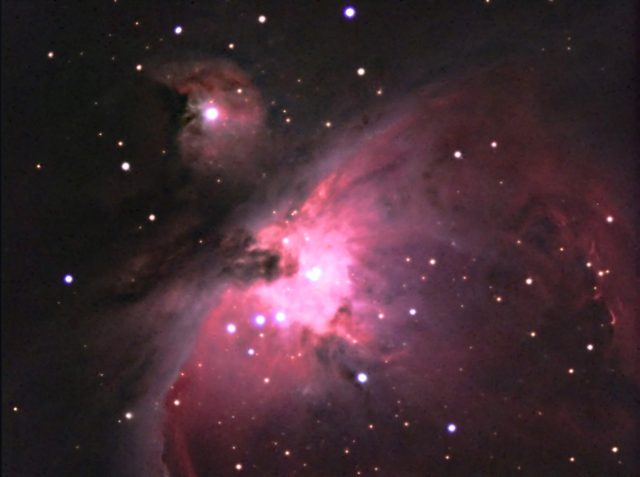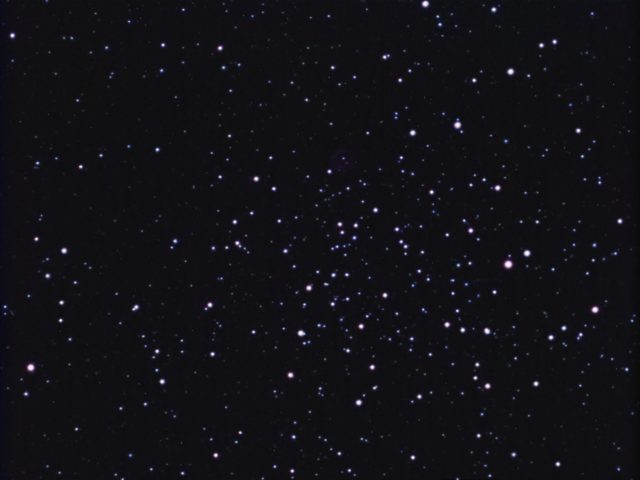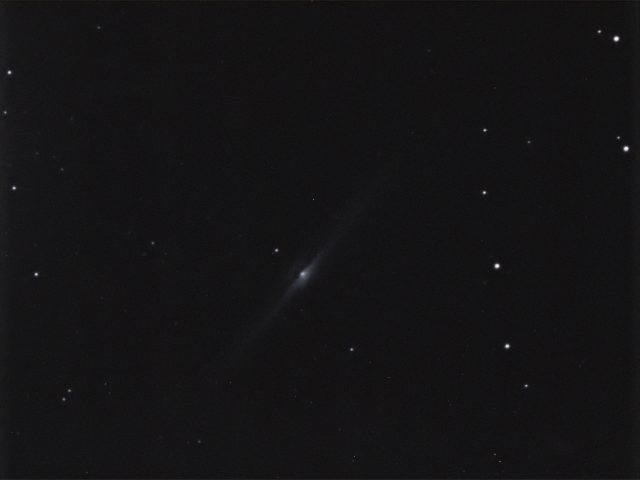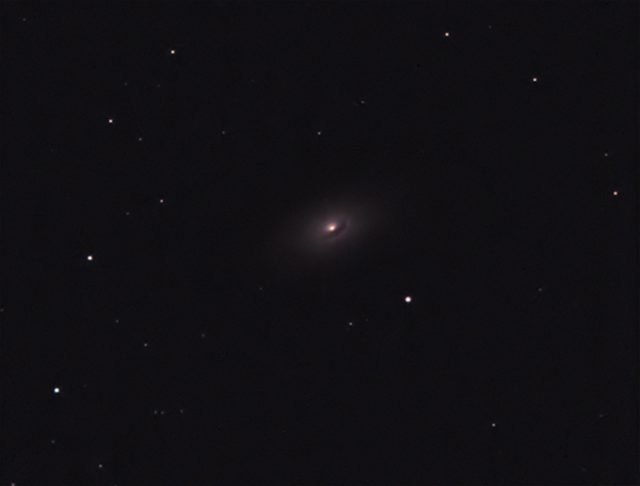
It was Friday, March 3, 2017 and the weather was iffy for imaging at my dark sky location. So, I decided to stay in town and try some short-exposure imaging with the Toupcam color planetary/guider cam I have.
I also wanted to try out an adapter I purchased for the Orion Star Shoot so that it can work with the Orion Ultra-Mini, 130mm, F/4.3 guider scope I’ve been using. This worked better with PHD2 than I thought it would. It seemed more accurate than the Toupcam with less dropped frames. In fact, I’ll probably leave this as the permanent guider setup.
For the Toupcam, I used a two inch extension on the TV-85 at F/7, but I still had to let the cam and extension hang halfway out the focuser to even reach focus. But, it was stable enough to try some simple targets like the Orion Nebula.
I used a software program called SharpCap for acquisition, dark subtraction and stacking. It worked well enough for M42, but it had trouble with stacking dimmer objects like M46, an open cluster with plenty of stars in it. I used IRIS to stack the individual frames manually for that one.

The last two images were tests of a relatively dim galaxies, like NGC 4565 and M64. I only got 16 frames for NGC 4565, so it is not too special. But, it shows the galaxy well enough to recognize what it is. Like the previous image, it was also stacked manually in IRIS.

For my M64 dim galaxy test, I accumulated 38 frames @ 8 sec each. It was also a test of using a video file format called .SER that was designed for astronomical imaging. It is like a video file. After I downloaded a SER viewer/player, which also let me export the frames out as TIF format, I was able to bring the data into IRIS and stack.

